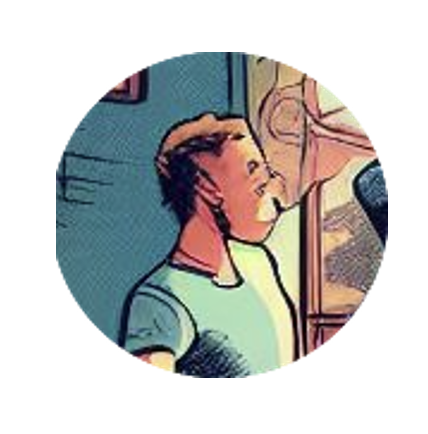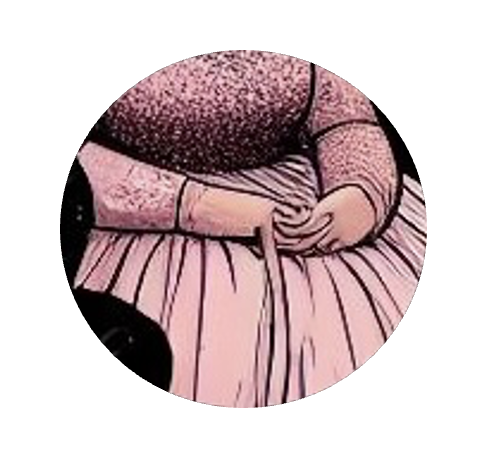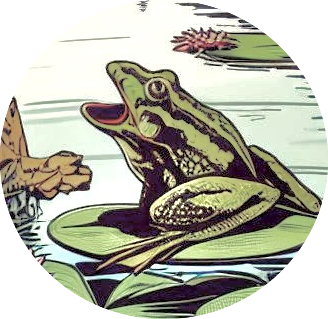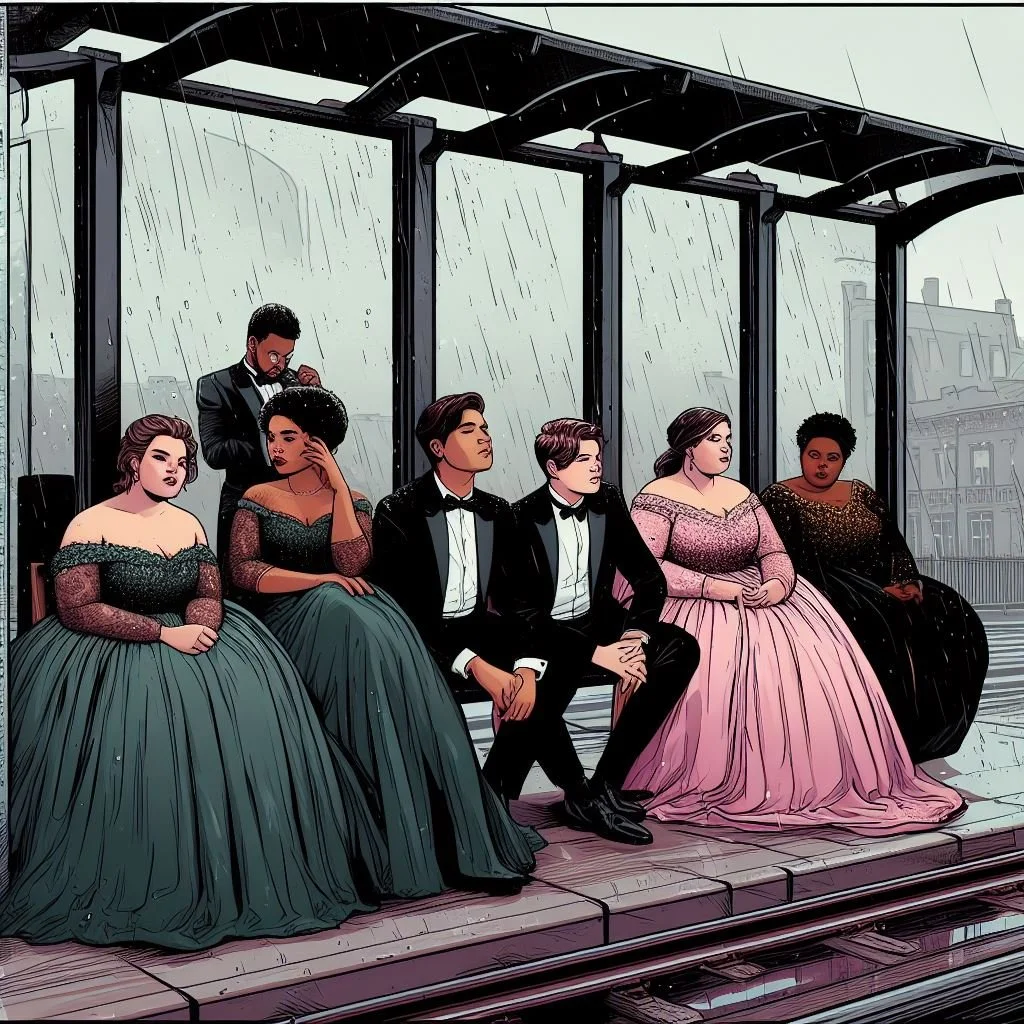Thoughts on AI.
VHO's 2024 Season Event graphics were created by producer Brenda Patterson, using Microsoft Bing's AI Image Generator. Here are some of her thoughts on the process: Why she decided to experiment with AI for the Season graphics, what the experience was like, and what she learned.
I approach all technology with deep suspicion. Not just new technologies - older ones, too. So often, technology of any kind feels dangerous: physically (matches! chainsaws! airplanes on autopilot!); a threat to privacy or control (DNA databases; facial recognition; GPS trackers); the cause of unwelcome changes in social behaviors (texting; ghosting; distractedness). I do not own a smartphone, I still write paper letters and use paper maps, and I opt for the pat-down at the airport instead of going through the scanner.
So people who know me may be surprised at my tinkering with AI - a disruptive, and in some ways terrifying, emergent technology. I, too, was/am scared of its awesome power, and fear for the many ways it will impact our world.
But as an artist, I consider it a principle of the work I do to remain curious, open, and aware. To explore, to question. To pay attention to the conversations being had. And in the case of technology, to engage with it on my terms, for my uses. In other words - I have always believed that technology of any kind is worth our while when it is not a shortcut or a substitute for something, but its own expressive medium: something that allows new possibilities, reveals new perspectives or ways of thinking and creating.
My UVA colleague, composer Matthew Burtner, likes to place microphones in the sea, to record the hidden languages of creatures such as mollusks. He then amplifies and remixes this fascinating, clickety chatter into new musical forms. While hearing a recording of an oyster is not the same experience as holding one in your hand, or tasting the sea by slurping one down with a squeeze of lemon, technology in this case allows us to perceive aspects of their reality that would otherwise be hidden from us.
In the case of AI, what is being revealed? our collective consciousness? or the projected consciousness of those whose presence dominates the Internet? (advertisers; men; teenagers; Hollywood; social media; Western culture; the tech industry, etc.) Also, the Internet can't smell, or feel anything, or garden, or eat, or pray, or love. It consists of 2-dimensional images, and words that are typed. Math. Sounds that are digitally compressed.
So it doesn't really represent humanity. But its limitations also reveal our own: how often we default to clichés, how we abstract and commodify things so readily, turn our lived experience into two dimensions.
The Bing AI Image Generator on its own produces strings of clichés, more clichés, stereotypes, and tropes. It takes repeated efforts to get it to create things outside of its conceptual boxes.
In my prompts, which I refined and revised as I went, I learned a few of its biases. Here are some examples:
Diverse = everyone is Black.
Young woman = banned text (too sexualized).
Woman = skinny.
Fat = banned text (offensive)
Plus-sized = applies to women only, not men
Opera singers = women in 19th-century, off-the-shoulder gowns (men in cravats)
Birds = interchangeable with flying fish
Asian woman = in a kimono, flowers in her hair. Often also sexualized (busty, in strangely low-cut kimonos)
AI is also VERY BAD at identifying musical instruments. Harps, accordions, horns, marimbas, even pianos - all of these take on weirdly mutable and non-functional form (harps without strings; horns without valves). Is it that this knowledge is so specialized that the Internet can't quite find enough data to figure it out? Or is it just reflecting actual general human awareness? (I am recalling the ex-girlfriend who referred to a cello as a "big violin". We did not date for long).
I agree with other creative users of AI (such as writer Sheila Heti, who recently published a short story in The New Yorker that she wrote "in collaboration" with a chatbot) that AI's flaws are also poignant, or consoling, "like a a doll with a broken arm." It is interesting to watch it striving to get better, and a relief that it gets so much basic stuff wrong still.
Let's zoom in and look at a few salient details from the VHO 2024 Season event images that demonstrate this:
What is going on with this guy’s face?
These hands look really weird.
Are those birds or fish?
I considered editing the images it produced to erase these flaws, but decided they were part of the point. The uncanniness, the slightly grotesque, surreal quality of AI. Trying to mimic life, but failing, always a bit off. I didn't want to conceal that fact that these were AI-generated images.
Now, back to why I wanted to use AI images at all: firstly, I want to stress that it was not to avoid hiring an artist. I felt that AI would be the perfect expressive vehicle for at least two of this Season's projects because they are about aspects of our current cultural moment: the forces of projected fantasy that can dehumanize and exploit, and the perseverance of life and art pushing back. AI mirrors our ideas about the world back to us: it doesn't show us a specific mall, or a specific opera singer (or an individual artist's rendering of these) - it shows us society's idea of a "mall", or of an "opera singer".
And even our third Season project, the concerts in the Quarry Gardens, though less about modernity, are a magical experience that a literal rendition can't quite capture:
I wanted to see the frogs singing along.
Now, I am pretty good with a pencil and could have drawn an image of a singing frog myself. I didn't have to use AI. But I didn't want to see my own idea of singing frog - I wanted it to surprise me, and it did. I would not have invented birds hovering over the water that look like flying fish, but AI did. And in this way, the randomness of the AI captures something of the dreamlike beauty and spontaneity of the place, that is beyond our own imagining and stage management. (Last year's concert featured a Blue Heeler dog deciding to jump onto the boat for a ride as the singers paddled out onto the water to sing. Also, a rainbow and a heron appeared over Miriam's Verdi aria. Neither of these were planned.)
But most of the specifics of the images that I prompted the AI generator to create were born from my own mind and experience. For example, I asked it to show me an abandoned mall with a pink crepe myrtle tree and vultures circling the lamp posts in the parking lot, because these are real-life details I have observed at Fashion Square Mall in Charlottesville. I did not ask it to make the mall entrance appear like a train tunnel to nowhere, though. That was its idea, and I love it.
I think this is why Sheila Heti referred to working with AI as a "collaboration". You give it ideas, and it gives you ideas.
The "bus stop" that the YAPs are seated at looks rather like a Manhattan subway stop, on an Uptown platform. Here I had asked the AI to show me a bus stop (in the rain), and it gave me many options of bus stops, tram stops, and subway stops - it wasn't entirely sure what made a bus stop a bus stop. But in the end I preferred its offering of this subway stop - because it feels exactly like the 1/9 station I used to wait at on 125th St. on my way down to Midtown for auditions, just like these YAPs may be doing.
The AI does not share my memories and associations of that experience, but I was able to conjure something like them, nonetheless, through repeated prompting.
And about that repeated prompting: lest anyone think using AI is a quick shortcut involving little human discretion or direction, it assuredly is not. I created a total of 1120 different images, over several weeks, to land on these final four*. I refined my generating criteria again and again, learning how it "thinks", and also letting myself follow the unexpected leads it would offer.
Although it is true that a human hand did not draw these drawings, a human heart and mind did devise them. In fact, I would say that the interactive, creative and personal human element is much more engaged with the Bing Generator than is the case with many common graphic design tools, such as stock images or marketing templates.
Finally, the images I created had to pass Victory Hall's 3-fold artistic test that we apply to everything we do: are they "disarming, exquisite, sincere"? I admit they may score a bit low on the exquisite-meter. But they are certainly disarming, and sincere. And beautiful in their own way.
I am curious what you think.
Feel free to send me your thoughts using the form below!
~ VHO Director of Music/ Producer Brenda Patterson
* Christoph Niemann's New Yorker cover captures this process well








